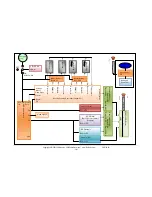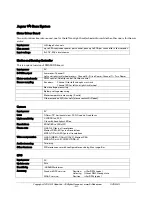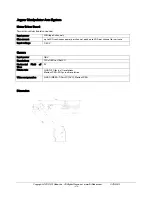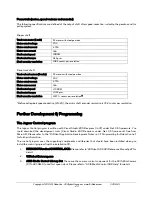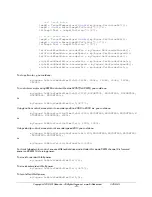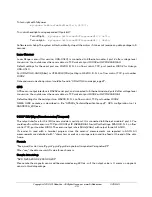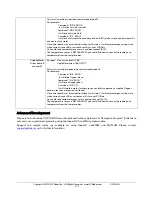
Copyright © 2014, Dr Robot Inc. All Rights Reserved. www.DrRobot.com V.04.11.14
- 25 -
To turn right with full power
myJaguar.DcMotorPwmNonTimeCtr(4,32767);
To control head lights, using expanded IO port bit7.
Turn off light:
myJaguar.SetCustomDOUT(expandedIO & 0x7f);
Turn on light:
myJaguar.SetCustomDOUT(expandedIO | 0x80);
Software watchdog: The system will automatically stop all the motors if it does not receive any data package in 5
seconds.
Laser Scanner
Laser Ranger sensor (4m version, URG-04LX) is connected to Ethernet module–1 port 2 after voltage level
conversion. You could access the sensor data via TCP socket at port 10002 with IP 192.168.0.60.
Default settings for the serial port are: 19200, 8, N, 1, no flow control, TCP, port number 10002 for Hokuyo
URG-04LX.
For URG-04LX-UG01(5.6m) or UTM-30LX(30m) setting is: 115200, 8, N, 1, no flow control, TCP, port number
10002
Date and communication protocol could be found in “URG-04LX commspec_eg.pdf”.
GPS
GPS sensor output interface is RS232 serial port, and connected to Ethernet module-2 port 2 after voltage level
conversion. You could access the sensor data via TCP socket at port 10002 with IP 192.168.0.61.
Default settings for the serial port are: 115200, 8, N, 1, no flow control, TCP, port number 10002
NMEA 0183 sentence is described in file “GPS18x_TechnicalSpecifications.pdf”. GPS configuration tool is
SNSRXCFG_200.exe.
9 DOF IMU (Gyro/Accelerometer/Compass)
The output interface for this IMU sensor module is serial port. It is connected to Ethernet module-2 port 1. You
could read from this sensor via TCP port 10001 at IP 192.168.0.61. Serial Port Settings: 57600, 8, N, 1, no flow
control, TCP, port number 10001. The sensor output rate is 50Hz (20ms) with output format of ASICII.
It’s easier to read with a terminal program since the sensors’ measurements are reported in ASCII. All
measurements are delimited with “,”characters as well as a carriage return and line feed at the end of the data
frame.
Format:
“$seq,accelX,accleY,accelZ,gyroY,gyroZ,gyroX,magnetomX,magnetomY,magnetomZ#”
After “seq”, the data are raw AD value for each sensor.
Sample data string:
“$2,0,9,255,20,40,3,235,400,20#”
Please note the magnetic sensor will be measured every 220ms, so if the output value is 0, means no magnetic
sensor in this data package.








